Imagine entering a bookstore and being bombarded with endless rows of generic fiction. No personalized recommendations, no curated lists based on your reading history. Just a sea of uniformity, hoping something catches your eye.
This, unfortunately, reflects the current state of internal communication (IC) in many organizations.
We blast out generic messages to a diverse workforce, hoping for engagement, but often achieving just the opposite: a chorus of crickets. In conversations with organizations, the internal comms specialists will tell me that employee engagement is at a crossroads.
Why?
Webinars, emails, and one-size-fits-all announcements simply don’t cut it anymore. But here is the good news: the solution doesn’t lie in waiting for some future AI utopia to fix employee engagement.
Data, context, and personalization are powerful tools and strategies internal comms professionals can use to improve the effectiveness of campaigns and keep employees engaged.
In today’s article, you’ll learn how to transform internal communications within your organization with data-driven personalization to boost employee engagement.
The Impact of Generic Communication on Employee Engagement
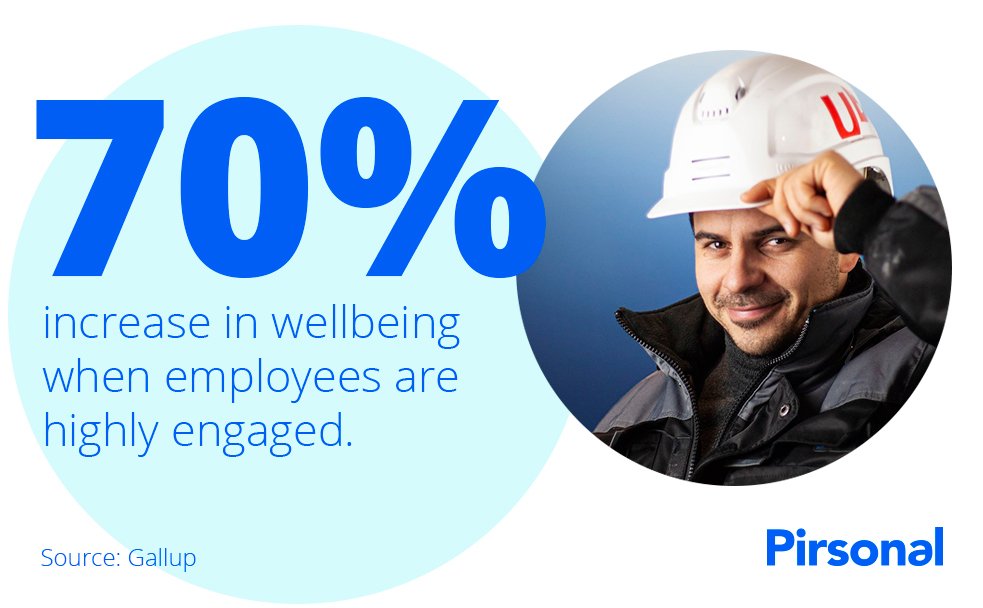
Generic internal communication is a pervasive issue that significantly impacts employee engagement and overall organizational performance. A study by Gallup found that engaged employees translate into thriving employees (70% increase in wellbeing), and 51% less likely to leave their jobs.
Conversely, disengaged employees can lead to decreased productivity, higher turnover rates, and a decline in customer satisfaction.
Therefore, when your organization increases the number of engaged employees, it improves a host of organizational outcomes: profit, retention rates, and customer service.
3 examples of generic communication failures:
- Overwhelming email inboxes: Employees are bombarded with irrelevant emails daily, leading to information overload and decreased attention to important messages.
- Lack of personalization in company announcements: Generic company-wide announcements often fail to resonate with employees, leading to disengagement and a sense of detachment from organizational goals.
- Ineffective crisis communication: During times of crisis, generic messaging can create confusion, fear, and mistrust among employees.
By understanding the specific challenges posed by generic communication, organizations can better appreciate the need for a more targeted and personalized approach.
The Power of Data in Employee Engagement
Data is the cornerstone of effective personalization for employee engagement in internal communication. By harnessing employee data, your organization can gain invaluable insights into your workforce, enabling you to tailor communication strategies precisely.
Examples of data points for personalized employee engagement:
- Demographic information: Age, gender, location, department, job role, tenure.
- Performance metrics: Sales figures, customer satisfaction scores, project completion rates.
- Learning and development data: Training completion, certifications, course preferences.
- Engagement metrics: Email open rates, click-through rates, and time spent on content.
- Feedback and survey data: Employee opinions, preferences, and suggestions.
By collecting and analyzing this data, organizations can identify patterns, trends, and opportunities for personalization in internal comms.
For instance, analyzing employee performance data can reveal high-performing teams or individuals who may benefit from targeted coaching or recognition programs.
It can also highlight employees unaware of the total rewards programs, therefore not maximizing the employer value proposition (EVP). Take, for instance, the following personalized video example that makes a total rewards statement clear to employees:
The Role of AI in Internal Comms
Artificial intelligence (AI) can significantly enhance data analysis and personalization efforts in internal comms. AI-powered tools can help identify patterns in large datasets, predict employee behavior, and automate personalized content delivery.
For example, AI algorithms can analyze employee email interactions to determine preferred communication channels or topics of interest. Or, an easier use case for many internal comms pros, finding patterns in spreadsheet data.
It’s essential to use AI ethically and responsibly. Data privacy and security must be prioritized to build trust with employees.
However, here is a word of caution regarding the use of AI in internal communications:
Sure, AI can help HR and comms leaders find patterns—find blind spots. However, here’s the shift: internal comms (IC) is about leveraging that refined data to fuel employee engagement through more engaging communications. This is the engine that drives organizational success.
For most IC teams, the solution doesn’t lie in waiting for some future AI utopia to fix employee engagement. This doesn’t have to be like this. You already possess a powerful weapon in your arsenal—data. And, another one that in my experience is even better—context.
These two powerful tools—data and context—enable you to use personalization to engage with employees in your internal comms strategy.
Make sure to watch the following webinar to learn how to use the power of storytelling, data, and personalization to create tailored employee experiences that drive higher engagement in internal comms:
Overcoming Challenges
In internal communication, implementing a data-driven personalization strategy can present challenges. Leadership in organizations may face resistance to data collection, concerns about data privacy, or a lack of technical expertise.
However, it’s important to remember that employee data has already been collected, right? Therefore, the question now is whether and how to use it.
The answer to this question can lead you to the implementation of successful internal communication campaigns that drive higher employee engagement through personalization.
To overcome these obstacles, it’s crucial to involve top leadership in the process, communicate the benefits of data usage transparently, invest in the necessary technology, and brainstorm with different teams to find creative ways to engage with employees with personalized messages.
By addressing these challenges proactively, your organization can unlock the full potential of data-driven personalization and create more engaging employee experiences.
Understanding Your Workforce: The Importance of Segmentation
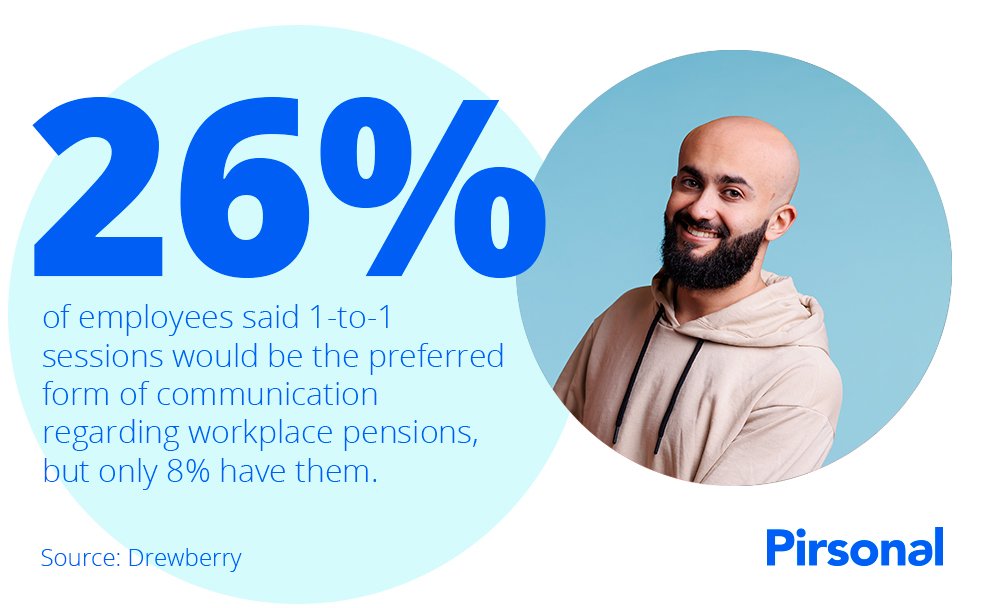
Employees prefer a personal touch but are not getting it from organizations
Effective personalization begins with a deep understanding of your workforce. Segmentation, the process of dividing employees into distinct groups based on shared characteristics, is a crucial step in developing targeted communication strategies.
Benefits of Employee Segmentation
- Improved message relevance: Tailored content resonates better with employees, increasing engagement and retention.
- Optimized resource allocation: By understanding employee needs, organizations can allocate resources efficiently. No more spray and pray.
- Enhanced employee experience: Personalized internal communication fosters a sense of belonging and value. Employees feel heard and seen.
- Data-driven decision making: Segmentation provides valuable insights for strategic planning.
Creating Effective Employee Segments
As mentioned earlier, there are different ways you can segment employees to engage employees with personalized messages and campaigns. From demographic factors to attitudinal data.
Interestingly, many of the segmentation techniques used in marketing can be adapted for employee segmentation. For instance, customer lifecycle stages (awareness, consideration, purchase, loyalty) can be mapped to employee lifecycle stages (new hire, onboarding, development, retention).
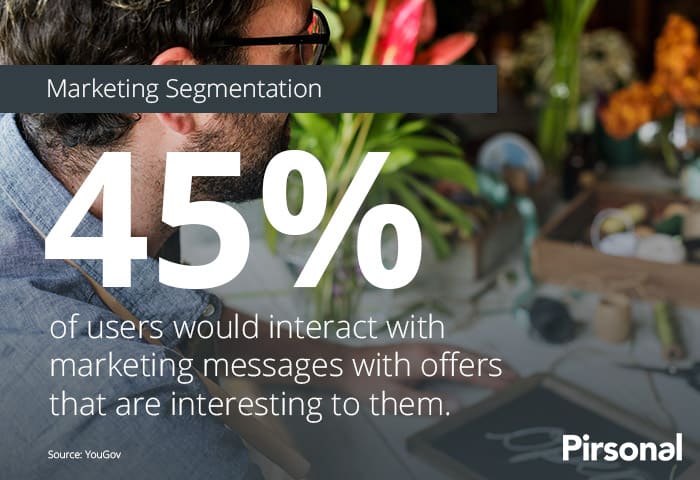
By borrowing insights from customer segmentation, organizations can gain a fresh perspective on how to categorize and understand their employees.
Meeting Employees Where They Are
Choosing the right communication channel is crucial for effective personalization. Different employees have different preferences, so offering a variety of options is essential.
However, here is a word of caution:
In conversations with organizations, internal communication leaders will discuss the problem of channel fatigue. However, in my experience, the problem is often not with the channel itself, but rather with the content that is shared through the channel.
A data-driven approach, allows you to use personalization to engage with employees based on their unique context.
At a practical level, this is often easier to execute through conventional distribution channels. It comes down to the tools you feel comfortable with and the channels your employees pay attention to.
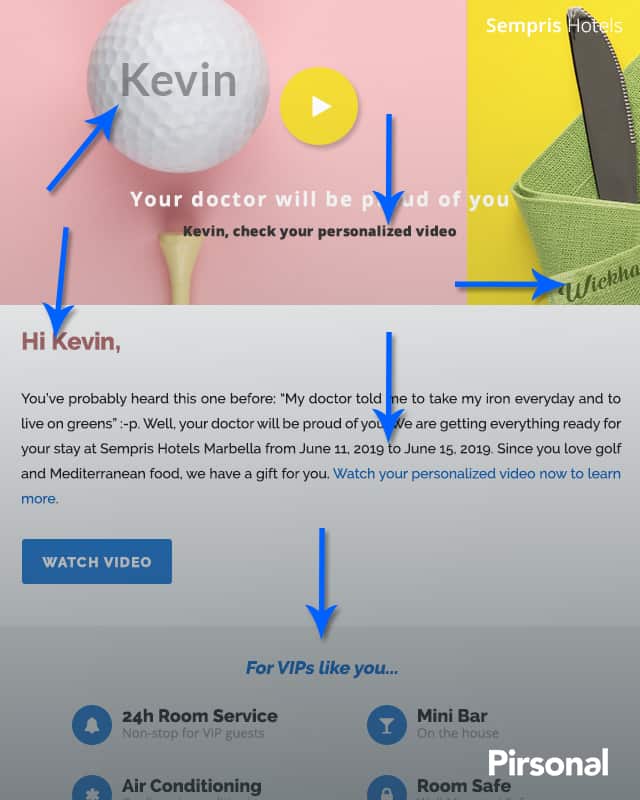
Example of personalized email with data-driven video
Here are some ideas:
- Email: While still a popular channel, email can be overwhelming. Personalization can enhance its effectiveness through targeted subject lines, segmented lists, and dynamic content.
- Intranet: A well-designed intranet can serve as a central hub for personalized content. Features like personalized dashboards, notifications, news feeds, and knowledge bases can enhance the employee experience.
- Mobile apps: Mobile-friendly platforms allow for on-the-go access to personalized information. Push notifications can deliver timely and relevant updates.
- Text messages (SMS): For spread-out workforces that spend most of their time outdoors, text messages can be extremely effective. Use personalization to add a human touch to your messages, even when created at scale.
- Social media: Internal social networks can foster engagement and community. Personalized content can be shared within specific groups or with individual employees.
- Direct mail: This old-school channel can be extremely effective. Use technology to send personalized direct mail pieces to employees for special announcements and celebrations.
In all these cases, the channel is as important as the content. If the content shared through the channel doesn’t stand out and doesn’t improve the employee experience, then you’ll have disengaged employees.
Use personalization to engage employees based on their unique context and to achieve specific business goals.
This is why personal video messages can add a human touch and increase engagement. No matter the channel you use, you can add these videos to your campaigns. Platforms like Loom or Wistia offer features for creating and sharing these personal videos.
If you want to take employee engagement to the next level, then personalize every single video for every employee. You can do this in a fast, scalable, and secure way with personalized video software like Pirsonal. Here is a personalized video that explains a pension plan statement to an employee:
With Pirsonal, you can automatically generate data-driven videos for employees using their data, eliminating the need to create each video manually.
By understanding employee preferences and behavior, organizations can select the optimal channels for delivering personalized content.
Tools and Technologies: Enhancing Personalization Efforts
Several tools and technologies can support personalization initiatives:
- Customer Relationship Management (CRM) systems: While primarily used for customer management, CRMs can be adapted to store employee data and support personalized communication.
- Marketing automation and email platforms: Tools like PoliteMail, Mailchimp, HubSpot, Marketo, and Pardot offer features for email marketing, lead scoring, and campaign automation.
- Intranet platforms: Modern intranets often include personalization capabilities, such as personalized dashboards and content recommendations.
- Analytics tools: Platforms like Google Analytics can provide insights into employee behavior and content consumption.
If you’re not using a personalization tool, I recommend checking with your marketing team to see if you can use their tools. It can save you time and resources.
Pirsonal’s personalized video software integrates with thousands of tools. Therefore, no matter the tool you use, even if it’s a CSV, you can leverage video personalization to make your content stand out and increase employee engagement.

Example of video personalization at scale
By leveraging these tools, your organization can streamline personalization efforts and measure their impact.
Overcoming Challenges
Implementing personalization in internal communication can be challenging. Common obstacles include:
- Data quality and accessibility: Ensuring data accuracy and consistency is crucial for effective personalization.
- Employee resistance: Some employees may be hesitant to share personal information. However, remember that you are already gathering employee data. As long as it is up-to-date, more often than not you won’t need more to start with personalization.
- Budget constraints: Investing in personalization tools and technology can be costly if you don’t know where or how to start. This is one of the reasons why at Pirsonal we closely assist our clients to help them strategically use video personalization to engage with employees.
- Measuring ROI: Demonstrating the value of personalization can be difficult if you don’t have specific goals and if you can’t track success. It is important to know your KPIs and supporting metrics. Also, choose tools that allow you to know if employees are consuming the content and if they are performing the desired next step. With Pirsonal Intelligence, this becomes easy, as you know how employees interact with their personalized interactive video.
As you can see, to overcome these challenges, organizations should prioritize data governance, build trust with employees, and focus on delivering tangible benefits.
Measuring the Impact of Personalization
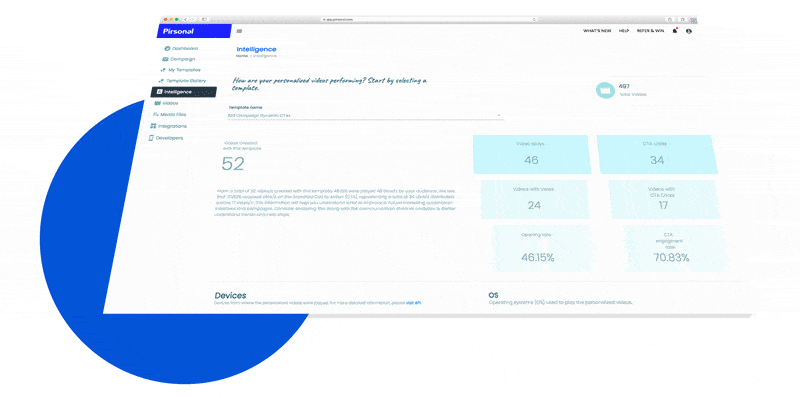
Measuring the impact of personalization is essential to demonstrate its value and inform future internal communication strategies. By tracking key metrics and conducting a thorough analysis, you can optimize your personalization efforts and achieve desired outcomes.
Key Performance Indicators (KPIs)
- Open rates: Compare open rates of personalized emails to generic ones.
- View rates: Compare the view rate of personalized videos to generic ones as well.
- Click-through rates (CTRs): Measure how often recipients click on links within personalized content. With Pirsonal’s interactive video player, Pirsonal Player, you can also measure the CTR for every video’s clickable call-to-action.
- Conversion rates: Track the percentage of recipients who take a desired action (e.g., sign up, purchase, complete a task).
- Time spent on content: Analyze how long employees engage with personalized content compared to generic content.
- Employee engagement scores: Conduct regular surveys to assess overall employee satisfaction and engagement levels.
- Return on investment (ROI): Calculate the financial benefits of personalization by comparing costs to increased employee satisfaction, retention, advocacy, productivity, or cost savings.
Analyzing and Optimizing
To maximize the impact of personalization, organizations should continuously analyze performance data and make adjustments as needed. Here is how:
- A/B testing: Experiment with different personalization strategies to identify the most effective approaches.
- Data segmentation: Refine employee segments based on performance metrics and engagement data.
- Content optimization: Tailor content based on audience preferences and behavior.
- Personalization feedback: Gather employee feedback to improve personalization efforts.
Measuring the impact of personalization can be complex. Factors such as seasonality, economic conditions, and external events can influence results. Additionally, attributing specific outcomes to personalization can be challenging if you are not properly using metrics to support your KPIs.
To overcome these challenges, establish a baseline for comparison, track multiple metrics, and use statistical analysis to isolate the impact of personalization.
At Pirsonal, we not only provide a scalable video personalization platform but also assist you in the execution of your employee engagement campaigns. This way you can leverage our experience for higher employee engagement with video personalization.
By carefully measuring and analyzing the results of personalization initiatives, you can demonstrate the value of this approach to your leadership and drive continuous improvement in internal comms.
The Future of Employee Engagement
The era of generic internal communication is drawing to a close. As organizations strive to foster a more engaged and productive workforce, personalization emerges as a powerful catalyst for transformation.
By harnessing the power of data and technology, organizations can create tailored experiences, campaigns, and messages that resonate with employees at every level. For example, your organization can leverage the combined power of video and personalization to successfully engage with employees.
Embracing personalization is not merely a trend but a strategic imperative. It requires a cultural shift towards data-driven creativity and decision-making. It’s a commitment to understanding employees, and a willingness to experiment and iterate.
By implementing effective personalization strategies, your organization can expect increased employee engagement, improved productivity, higher retention rates, and a stronger employer brand.
Ultimately, the success of any organization hinges on the dedication and commitment of its people. Personalized communication is a key to unlocking that potential.
At Pirsonal, we are here to help you engage with your workforce with personalized video content that stands out, so employees clearly understand the employer value proposition and take action. If you want to know how to leverage personalized videos to engage with employees, contact us today.
